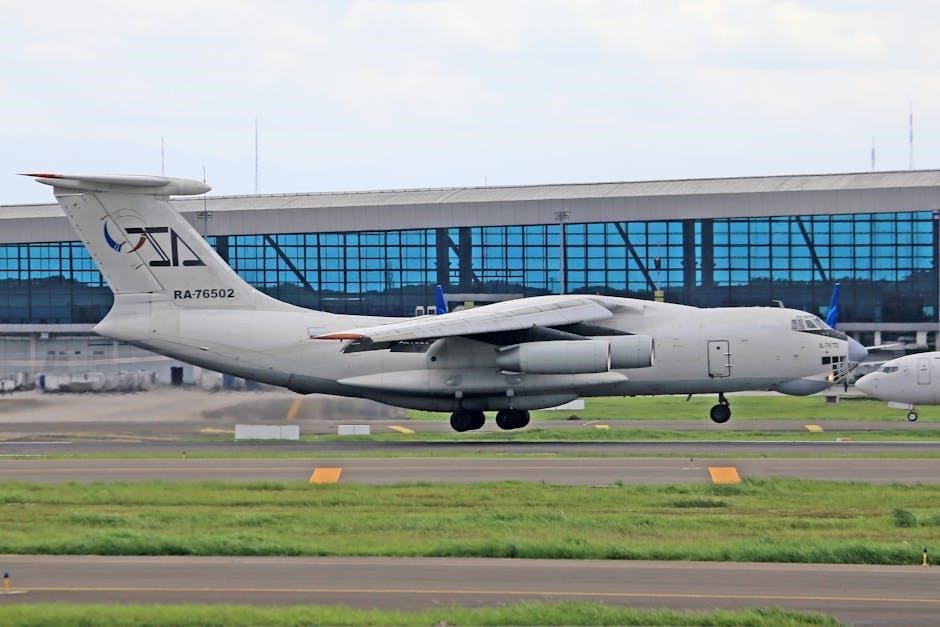A livery yard must instruct renters on safety protocols, horse handling, facility usage, and general care responsibilities to ensure a harmonious and functional environment for all.
Proper guidance helps maintain the well-being of horses and the smooth operation of the yard.
1.1. Overview of Livery Yard Operations
A livery yard operates by providing horse care and facilities for rent, ensuring proper management of stalls, arenas, and pastures. Renters must understand the daily routines, such as feeding times and grooming practices, to maintain horse well-being. The yard also oversees equipment maintenance and enforces safety rules to prevent accidents. Clear communication of these operations ensures a smooth and organized environment for both renters and horses;
Adherence to these guidelines is essential for efficient yard management.
1.2. Importance of Clear Instructions for Renters
Clear instructions are vital to ensure renters understand their roles and responsibilities within the livery yard. Proper guidance helps prevent misunderstandings and potential hazards, fostering a safe environment for both horses and users. Instructions also promote consistency in horse care and facility maintenance, which are crucial for the well-being of the animals and the longevity of the yard’s equipment. By providing detailed guidelines, the yard can uphold its standards and ensure a positive experience for all renters.
Clarity fosters accountability and cooperation.

Safety Protocols
Safety protocols are essential to protect both renters and horses. They include proper handling, use of protective gear, and adherence to emergency evacuation plans to prevent accidents and ensure a secure environment.
2.1. General Safety Guidelines

Livery yards must instruct renters on general safety guidelines to ensure a safe environment. These include wearing appropriate PPE like helmets and sturdy footwear, maintaining a clean workspace, and being aware of surroundings. Renters should also be advised to secure gates properly, avoid loose jewelry, and handle horses calmly to prevent accidents. Additionally, clear signage and regular safety briefings can help maintain a secure and orderly facility for all users.
2.2. Emergency Procedures
Livery yards must instruct renters on emergency procedures to ensure preparedness. This includes having a first-aid kit on site, knowing fire extinguisher locations, and establishing evacuation routes. Renters should be trained to handle horse injuries, report incidents promptly, and contact emergency services when needed. Regular drills and clear communication of protocols are essential to maintain safety and minimize risks during critical situations, ensuring the well-being of both humans and animals.

Horse Handling and Care
Livery yards must instruct renters on proper horse grooming, safe tacking, and feeding guidelines to ensure horses receive consistent, high-quality care and attention.
3.1. Proper Grooming Techniques
Livery yards should instruct renters on proper grooming techniques, including the use of curry combs, brushes, and hoof picks to maintain horse hygiene and health.
Regular grooming helps prevent skin issues, distributes natural oils, and strengthens the bond between horse and handler. Renters should be taught to groom gently but thoroughly, paying attention to sensitive areas and avoiding excessive brushing that may cause discomfort. Proper tool maintenance and storage should also be emphasized to ensure cleanliness and longevity of equipment;
3.2. Safe Tacking and Untacking Procedures
Liveries must instruct renters on safe tacking and untacking practices to ensure horse comfort and prevent injuries.
Renters should be taught to securely fasten saddles and bridles, checking for proper fit and avoiding tightness that could cause discomfort. Untacking should be done calmly, with attention to removing equipment carefully to prevent startling the horse. Emphasis should be placed on inspecting tack for wear and tear, and storing it correctly to maintain quality and safety standards for all users.
Facility Usage
Liveries must instruct renters on proper arena and pasture rules, equipment maintenance, and waste disposal to maintain a clean and functional environment for all users and horses.
4.1. Arena and Pasture Rules
Liveries must instruct renters on proper arena usage, such as scheduled times, safety guidelines, and correct horse behavior monitoring. Pasture rules should include waste disposal protocols, rotational grazing practices, and equipment storage. Renters must be informed about permitted activities, prohibited items, and the importance of maintaining clean facilities. Clear communication ensures equitable access and preserves the condition of shared spaces for all users and their horses;
4.2. Equipment Maintenance and Storage
Liveries must instruct renters on proper equipment maintenance, including regular cleaning and inspection of tack and tools. Storage guidelines should specify designated areas for each item, ensuring organization and accessibility. Renters should be reminded to label personal equipment and report any damage promptly. Proper care and storage prevent wear, reduce safety risks, and maintain a tidy, efficient environment for all users of the facility.
Feeding and Nutrition
Liveries must instruct renters on proper feeding practices, including portion sizes, prohibited substances, and feeding schedules. Clear guidelines ensure horses receive balanced nutrition and avoid health risks.
5.1. Guidelines for Feeding Horses
Liveries must provide renters with clear feeding guidelines, including recommended portion sizes, feeding schedules, and types of acceptable hay and grains. Renters should be informed about prohibited substances and the importance of maintaining a balanced diet. Instructions should also cover the proper storage of feed to prevent spoilage and contamination. Regular monitoring of a horse’s weight and health is essential to ensure nutritional needs are met. Proper feeding practices promote equine health and prevent digestive issues.
5.2. Restricted Foods and Supplements
Liveries must inform renters about restricted foods and supplements to prevent harm to horses. Common restrictions include high-sugar treats, moldy hay, and certain medications without veterinary approval. Renters should be advised against over-supplementation, as it can lead to health issues. The livery should also maintain a list of banned substances and ensure renters comply with these rules to safeguard the horses’ well-being and maintain a safe environment for all animals in the facility.

Veterinary Care
Liveries must instruct renters on mandatory veterinary protocols, such as regular vaccinations and dental care, and proper documentation of health records to ensure horse well-being.
Additionally, renters should be informed about emergency procedures and the importance of promptly reporting any health concerns to the livery management and veterinary team.
This collaborative approach ensures timely medical interventions and maintains the overall health of the horses.
Clear communication is key to preventing untreated issues and fostering a healthy environment for all animals in the facility.
6.1. Required Veterinary Protocols
Livery yards must instruct renters on mandatory veterinary care, including regular vaccinations, dental checks, and deworming schedules.
Annual veterinary examinations are essential to ensure horses remain healthy and fit for riding and boarding.
Renters should be advised to maintain up-to-date veterinary records and provide proof of vaccinations upon request.
Additionally, liveries should outline protocols for handling veterinary emergencies and the importance of preventive care to avoid health issues.
6.2. Recording and Reporting Health Issues
Livery yards must instruct renters to monitor horses’ health daily and report any signs of illness or injury promptly.
Renters should maintain a log of observations, noting changes in appetite, behavior, or physical condition.
Any health concerns must be reported to the livery management and the veterinarian immediately to ensure timely intervention.
Accurate records help track treatment and ensure the well-being of the horse, preventing minor issues from escalating into serious problems.
Riding Rules
Livery yards must instruct renters on arena and trail riding etiquette, ensuring safety and respect for others.
Encourage the use of proper riding gear and adherence to established protocols to maintain order and prevent accidents.
Clear communication and awareness of surroundings are essential for a safe and enjoyable riding environment.
7.1. Arena and Trail Riding Etiquette
Renters must be instructed to always pass other riders on the left, maintain a safe distance, and communicate intentions clearly.
When riding in arenas, prioritize order and avoid abrupt movements that could startle horses or riders.
On trails, respect other users, keep horses under control, and avoid galloping near others.
Etiquette ensures a safe and enjoyable experience for all riders and horses.
7.2. Safety Gear Requirements
Renters must wear approved riding helmets or hats that meet current safety standards while mounted.
Body protectors are recommended for jumping or high-risk activities.
Proper riding boots with a low heel are essential to prevent feet from getting stuck in stirrups.
Gloves improve grip and control, enhancing safety.
Ensuring correct fit and compliance with safety gear standards is vital for a secure riding environment.

Waste Management
Renters must properly dispose of horse waste in designated areas and recycle appropriately.
Correct use of trash and recycling bins is essential to maintain a clean and hygienic environment.
8.1. Proper Disposal of Horse Waste
Renters must dispose of horse waste in designated bins or composting areas to prevent contamination.
Regular cleaning of stalls and paddocks is crucial, with waste collected daily.
Composting manure reduces environmental impact and maintains facility hygiene.
Proper disposal prevents pests and odors, ensuring a clean environment for all horses and users.
8.2. Recycling and Trash Guidelines
Renters must separate recyclable materials from general waste, using provided bins.
Recyclables include paper, plastic, and metal, while hazardous materials require special disposal.
Excess packaging and non-recyclable items should be disposed of correctly.
Participating in recycling supports environmental sustainability and helps maintain a clean facility.
Clear guidelines ensure efficient waste management and benefit the yard’s ecosystem.
By following guidelines, renters ensure a safe, clean, and respectful environment for horses and others.
Adhering to these instructions fosters a positive experience for all.
Remember, responsible behavior is key to maintaining a well-run livery yard.
9.1. Summary of Key Responsibilities
Renters must adhere to safety protocols, proper horse care, and facility rules.
They should maintain clean living spaces, report health issues, and follow feeding guidelines.
Understanding emergency procedures and respecting shared areas is crucial.
Timely communication with yard management ensures smooth operations.
These responsibilities promote a safe, efficient, and respectful environment for all horses and users.
By fulfilling these duties, renters contribute to the overall success of the livery yard.
9.2. Final Reminders for Renters
Always respect the facility and other users, adhering to yard rules and protocols.
Regularly inspect tack and equipment for safety and functionality.
Maintain open communication with yard staff and fellow renters.
Be prepared for emergencies by knowing procedures and contact information.
Remember, your actions impact the well-being of horses and the overall yard environment.
Consistent adherence ensures a safe, respectful, and efficient space for everyone.